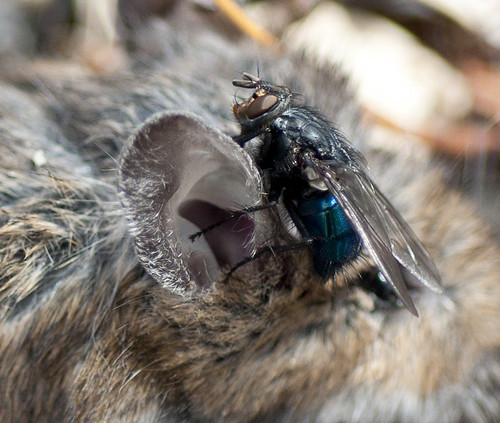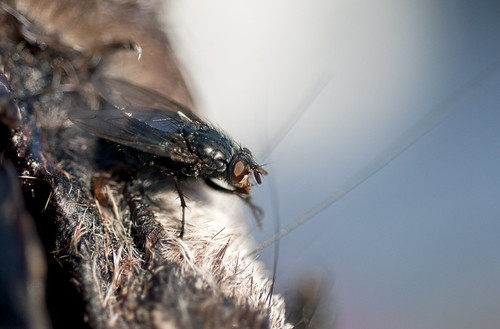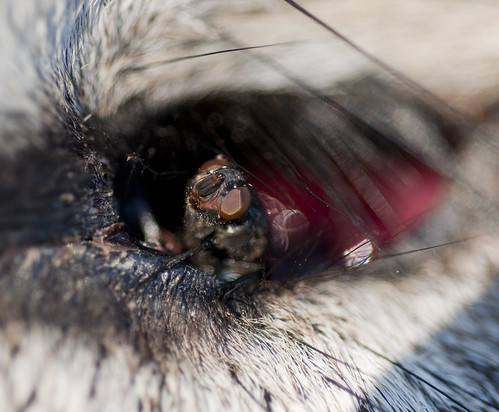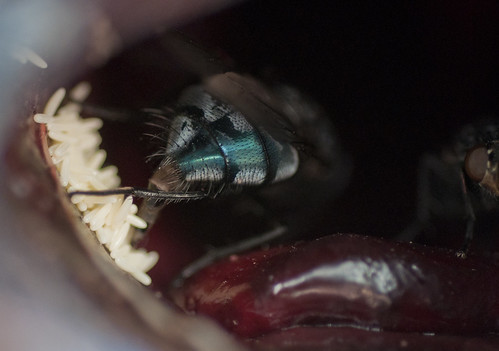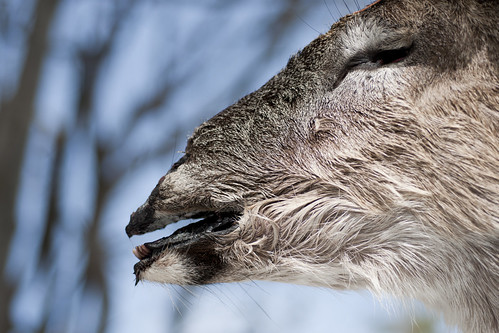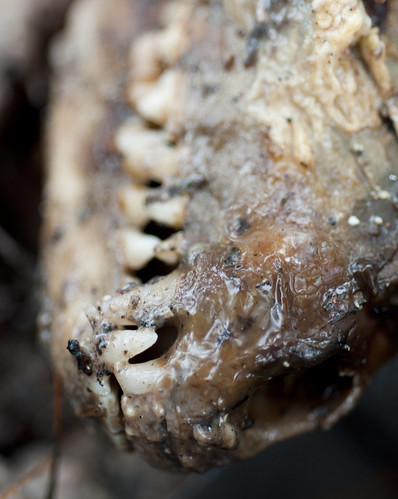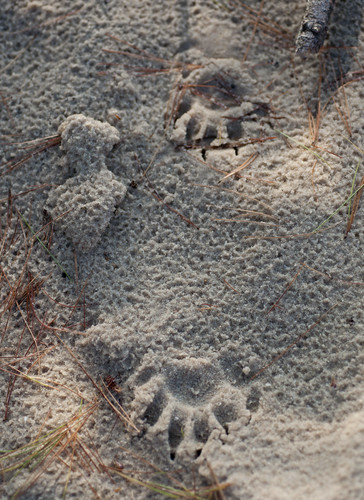This is a
Fisher (Martes pennanti) skull:
It should not be confused with an
American Badger (Taxidea taxus) skull:
... or a
Raccoon (Procyon lotor) skull:
Fishers are a large member of the weasel family, Mustelidae. An uncommon and shy animal, they are agile tree-climbers and prefer coniferous forests. Fishers are well-known for being one of the very few predators of porcupines! They also prey upon snowshoe hares, squirrels, and other small mammals, and are known to eat carrion. Despite what their name suggests, fishers do not seek aquatic meals.
Here is another view of the fisher skull. Note the canine tooth was not quite fully erupted at the time of the animal's death:
And, a closer look at that canine tooth:
This is an interesting skull — the rest of the teeth appear to be adult teeth, fully grown-in. Some of the nasal sutures are fused, and the sagittal crest, while small, is still rather well-developed. It's possible that the canine tooth was just late in appearing, a pathology unique to this particular individual.
A fisher skull should not be hard to identify. Shape and size aside, there is an easy-to-find feature that is unique to this species' teeth:
The upper molar, second from the back, has an exposed "rootlet". No other animal skull of similar size or shape possesses this same characteristic. Nevertheless, fisher skulls seem to get confused with those of raccoons and badgers, at least in my experience.
As you might remember from the
previous post about the badger skulls in my collection, they were a case of mistaken identity: the shop owner swore that they belonged to fishers. Here's a side-by-side comparison of the two:
 |
| click for larger view |
Though fishers and badgers both belong to the weasel family, their appearance, habits, and skulls are quite different! The badger skull is larger and stockier; the fisher skull is thinner, with an overall more delicate appearance. While badgers are digging, burrowing animals restricted to the ground, fishers are skilled climbers and possess retractable claws.
When I purchased this fisher skull, it was misidentified as that of a raccoon. Shown together, they are quite different in shape, as well:
 |
| click for larger view |
Again, the fisher skull is longer, thinner, and flatter than the stocky, domed raccoon skull. Raccoons, like fishers, are dexterous climbers, but their omnivorous diet is far more varied — hence the not-so-sharp teeth of the raccoon.
For good measure, here is a side-by-side comparison of the raccoon and badger skulls, as these two are often confused, as well:
 |
| click for larger view |
Badger and raccoon skulls are actually pretty similar in appearance! But raccoon skulls are smaller, and badger skulls have a more "square" profile. Raccoons are not mustelids, and instead are part of a
family that includes coatis and ring-tailed cats.
I've never seen a live fisher in my travels, and likely never will — they are a very wary animal. I came very close, however, last summer: Steph and I were backpacking along Pictured Rocks in Alger County, and near the beach we discovered the fresh tracks of a fisher:
It was likely that the fisher had been there no more than half an hour before us. Despite searching extensively, we never found the owner of the tracks.

